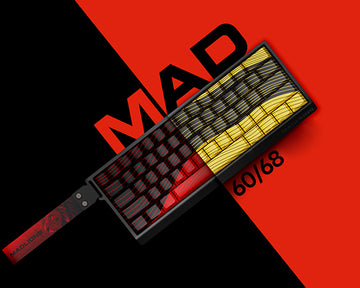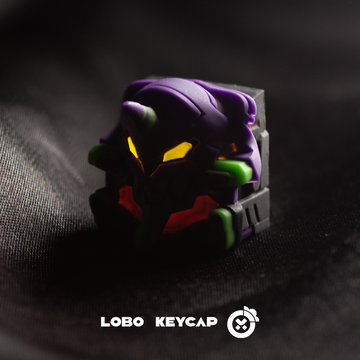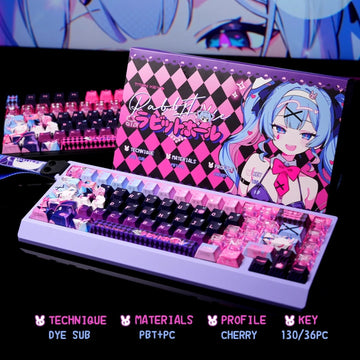What are Magnetic Switches?
Magnetic switches, also known as Hall Effect switches, are a new type of mechanical keyboard switch that utilizes Hall Effect technology. Its principle is similar to that of the Hall Effect used in game controllers, offering greater flexibility and responsiveness.
Comparison of Magnetic Switches and Traditional Mechanical Switches
Traditional mechanical switches rely on metal contact points to register key presses, while magnetic switches use permanent magnets and sensors without physical contact. This design allows users to customize the actuation points, enabling nearly infinite triggering options.
To understand the appeal of magnetic switch keyboards, it's helpful to first look at traditional mechanical switches. These switches rely on metal contact points to register key presses, known as the actuation point, which determines when a key is registered.
The shape of the switch distinguishes linear switches (like red switches) from tactile switches (like brown and blue switches). Linear switches feel smooth, while tactile switches offer slight resistance when pressed. The overall design and spring affect the feel and sound of the key, as well as when it registers. For example, red switches register after about two millimeters of travel, with a total travel distance of four millimeters, which can introduce delay and limit precision.
(The working principle of mechanical shaft)

Magnetic switches operate on a completely new principle. Although they were invented as early as the 1960s, they could not be practical at the time due to the lack of small integrated circuits. The Dutch company Wooting was the first to promote practical magnetic switches, retaining the design of mechanical switches but without a closed circuit, which means there are no "legs." Instead, a permanent magnet inside the switch replaces the spring and contact points. When pressed, sensors on the PCB can precisely record the position of the switch. This change allows users to adjust the depth required for key registration, utilizing the Hall effect to achieve nearly infinite trigger point options.
(magnetic axis uses a permanent magnet instead of a mechanical spring in the key part of the shaft body)

Advantages of Magnetic Switches
Low Latency: Magnetic switches allow for extremely low actuation points, reducing input lag and enhancing responsiveness, especially in competitive gaming.
Quick Actuation: Users can rapidly release and re-trigger keys during presses, providing greater control and precision, ideal for complex maneuvers.

Stable Performance: With no fixed mechanical drive, magnetic switches ensure consistent key pressure, maintaining stable input performance under various conditions.

High Customizability: Supports Dynamic Key Switching (DKS) and Mode Tactile (MT) functions, allowing users to adjust actuation and release points according to different needs.

(travel customization interface in magnetic axis keyboard driver)
If you want to make it more personalized, you can even create macro-like functions that assign multiple actions to a single key. This way, different actions can be triggered when the key is pressed halfway, fully pressed down, or released.

Durability: By reducing mechanical contact, the durability of magnetic switches is significantly improved, similar to that of Hall Effect joysticks.
Recommended Magnetic Keyboard Brands
Wooting 60HE: This keyboard is favored by gamers for its outstanding customizability and low latency performance, making it ideal for competitive gaming.
Keychron HE: Combining classic design with modern technology, the Keychron HE offers multiple connectivity options to suit various user needs.
TITAN68HE: This keyboard stands out with its distinctive and personalized design. It not only provides an excellent gaming experience but also supports various customization features to meet the needs of different players.
MAD60 HE: Renowned for its cost-effectiveness, MAD60 HE provides stable performance and durable build quality, making it suitable for users on a budget who still want a premium experience.
Limitations of Magnetic Switches
Despite their numerous advantages, magnetic switches are not without limitations. Their performance relies on the precision of the permanent magnets and sensors, which may require calibration during transport. Additionally, magnetic keyboards should be kept away from strong magnetic environments, limiting their use in certain industrial settings.
Conclusion
Magnetic switch technology brings a new experience to mechanical keyboards, allowing users to flexibly adjust key responses based on their needs. While there are some limitations, the potential of magnetic switches in gaming and professional applications makes them a significant development direction for future mechanical keyboards. Choosing a magnetic keyboard offers the opportunity to experience "one switch in hand, endless possibilities."





